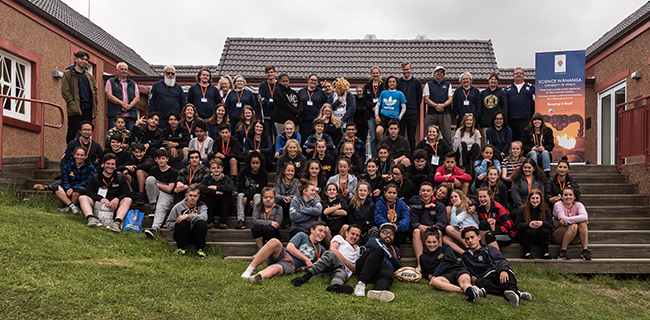Participants in the 29 Science Wānanga delivered between 2008 and 2016 include:
- 1141 Māori students studying sciences in Years 7-13
- 206 of their teachers from 60 schools
- 275 university staff & postgraduates
- 53 community members involved in delivering science projects
- numerous kaumatua, kuia (elders male and female), whanau (family), and ringawera (kitchen helpers) engaging through manaakitanga (care and support) and matauranga on marae.
- Māori postgraduate students are particularly valued as role-models for rangatahi.
Further details of the the previous Science Wānanga are available below.
September 2017, Waipatu Marae, Hastings
In September 2017 Science Wānanga delivered a Wānanga to year 8-10 students at Waipatu Marae, Dunedin. The overarching theme of this Wānanga was water quality, particularly underground water quality. The Wānanga focussed on three project areas: physics, pharmacology and ecology.
The physics project introduced students to the nature of light and how light can be utilised to detect and measure pollutants in water.
The pharmacology project utilised aquatic invertebrates (water fleas and sea monkeys) to assess the toxicity of water. Students were able to investigate the effect of heavy metals on invertebrates survival. Students were then introduced to how water quality can be improved using fruit peel preparations to remove heavy metals from the water. The notion of utilising fruit peel preparations was based on current research being conducted by the pharmacology team on a method to produce a chap and easy resource that could be used to improve the water quality of home drinking water.
During the ecology project students were introduced to the idea of biological stream health indicators. Students were able to compare samples sourced from natural sites with sites impacted by agriculture. Students were able to quantify algal & invertebrate biomass and biodiversity to get a clear idea of the local streams health. Students were also able to measure dissolved oxygen, pH & conductivity of water samples to further establish the health profile of the local stream.
The Wānanga attendees included:
- 60 year 8-10 students
- 7 teachers
- 10 postgraduate students and academics
The Wānanga was delivered in collaboration with Te Taiwhenua o Heretaunga, Hawke's Bay DHB, Tūruki and the Dodd-Walls Centre.
November 2017, Ōtākou Marae, Dunedin

In November 2017 Science Wānanga delivered a Wānanga to year 9-10 students at Ōtākou Marae, Dunedin. The overarching theme for this Wānanga was that all components of the world we live in are interconnected and must remain healthy in order for us all to flourish. Individual projects included: bioarchaeology, sea lion science, ecology and physics.
Have you ever wondered what old bones from human skeletons can tell us about health problems today? This was the question posed by the bioarchaeology project. Students were provided with hands-on experience with the excavation, observation and data collection from bones and teeth to demonstrate the inter-connectedness of humans and the environment in which we live.
New Zealand Sea Lions are endemic to New Zealand waters and are the world's rarest sea lion, with fewer than 12000 remaining and 99% of them breeding at only five sites located around the Auckland Campbell Islands. This project explored the biology of the New Zealand Sea Lion and investigated how we can help the population returning to the Otago coast.
During the ecology project students were provided a view into the world of ecology and taxonomy by performing biodiversity surveys of two different habitats. The students investigated the invertebrate, plant and vertebrate species present at the habitats. After observing and classifying the species students were able to make some general observations about how these habitats differed, and the interconnections between human activity and ecology.
How do we test water quality? How do we specifically measure how many molecules of nitrate or ammonia is in our water? How do we test what the sun is made of? These were the questions the physics project aimed to resolve. In the project students were taught some of the basic properties of light and, with the aid of cardboard spectroscopes, were able to determine what atoms or molecules certain things are moade out of by looking at their spectrum.
The Wānanga attendees included:
- 60 year 9-10 students
- 7 teachers
- 10 postgraduate students and academics
The Wānanga was delivered in collaboration with Te Rūnanga o Ōtākou, Otago Museum and the Dodd-Walls Centre.